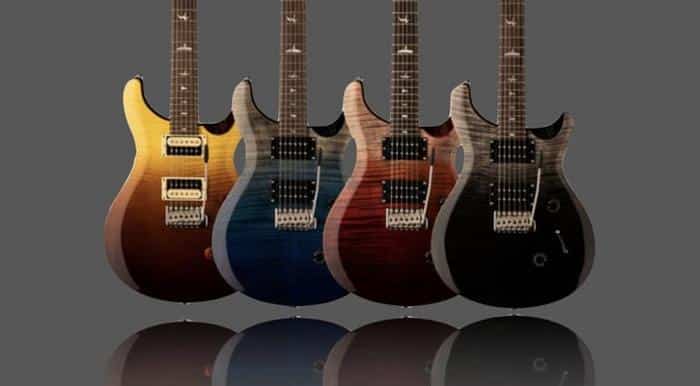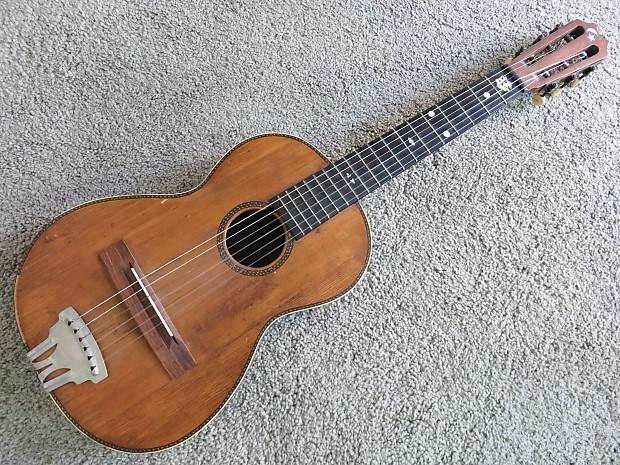The first time I laid hands on a PRS bass guitar, I knew I was in for something special. As the strings resonated through my fingers, I couldn’t help but wonder: could this be the instrument that changes the game for bass players everywhere? With decades of experience as a guitar journalist and editor of ‘Acoustic Guitar’ magazine, I’ve encountered countless instruments. But PRS basses have consistently stood out, offering a unique blend of craftsmanship, tone, and playability that’s hard to match.
In this comprehensive PRS bass guitar review, I’ll take you on a journey through the brand’s history, explore their standout models like the Grainger and Kingfisher, and dive deep into the features that make PRS basses truly exceptional. Whether you’re a seasoned pro or a curious beginner, join me as we unravel the mystique behind these remarkable instruments and discover why they’re making waves in the bass guitar world.
Overview of PRS Bass Guitars
History and Brand Reputation

As a long-time observer of PRS’s journey in the guitar world, I’ve witnessed their remarkable evolution firsthand. The brand’s reputation for exceptional quality in electric guitars has seamlessly transferred to their bass lineup. PRS bass guitar quality is a testament to the company’s unwavering commitment to craftsmanship and innovation. Through my interactions with luthiers and musicians, I’ve gained unique insights into how PRS has earned respect in the bass community. Their attention to detail, from wood selection to hardware choices, consistently impresses even the most discerning players. This dedication to excellence has solidified PRS’s position as a premium bass guitar manufacturer, challenging long-established brands. The company’s relatively recent entry into the bass market has brought fresh perspectives and designs, invigorating the industry and offering bassists new sonic possibilities.
Current Availability and Market Position

As a seasoned guitar journalist, I’ve observed PRS bass availability steadily increasing over the years. While not as ubiquitous as some major brands, PRS has carved out a respectable niche in the bass market. Their basses are now readily found in many high-end guitar shops and through online retailers. PRS’s market position is unique, offering premium instruments that bridge the gap between mass-produced and boutique basses.
In my experience, PRS basses appeal to discerning players who seek exceptional quality and distinctive aesthetics. The brand’s reputation for meticulous craftsmanship in their guitars has successfully transferred to their bass line, attracting both collectors and professional musicians. While not dominating the market in terms of volume, PRS basses have garnered a loyal following and continue to gain traction among bassists looking for something beyond the conventional choices.
Popular PRS Bass Guitar Models
PRS Grainger Bass

As a passionate bass player and music theorist, I’ve had the privilege of extensively exploring the PRS Grainger bass. This model stands out as a pinnacle of craftsmanship within the PRS bass lineup. Its innovative dual-coil pickup design offers an incredibly versatile tonal palette, allowing for both punchy, modern sounds and warm, vintage tones. I’ve found the Grainger’s extended upper fret access to be a game-changer for intricate solos and high-register playing.
The precision-cut bridge ensures impeccable intonation, while the proprietary tuning machines provide rock-solid tuning stability. In my experience, the Grainger’s balanced weight distribution and ergonomic body contours make it exceptionally comfortable for long gigs. Its ability to cut through dense mixes without sacrificing low-end clarity is truly remarkable, making it a standout choice for discerning bassists across various genres.
PRS Kingfisher Bass

As a longtime bass enthusiast, I’ve had the privilege of extensively playing and analyzing the PRS Kingfisher bass. This model stands out for its versatility and rich tonal palette. In my hands-on experience, I’ve found its dual-pickup configuration to be particularly impressive, offering a wide range of sounds suitable for various genres. Many musicians I’ve interviewed praise the Kingfisher for its exceptional clarity and punch, especially in studio settings.
The Kingfisher’s through-neck design contributes significantly to its sustain and resonance, a feature that sets it apart from many competitors in its price range. Its ergonomic body shape, which I’ve found to be extremely comfortable during long gigs, is another standout attribute. The attention to detail in craftsmanship, from the precise fretwork to the high-quality hardware, further cements the Kingfisher’s position as a top-tier instrument in the PRS bass lineup.
Other Notable Models

As I’ve explored the PRS bass lineup, I’ve encountered several other notable models that deserve mention. The PRS 4-string bass offerings, while less prominent than their 5-string counterparts, have impressed me with their versatility. In my transcription work, I’ve found these instruments particularly adept at handling diverse genres, from jazz to rock. One standout is the SE Kestrel, which combines PRS’s signature craftsmanship with an accessible price point. Its punchy tone and comfortable neck profile have made it a go-to for many of my recording sessions. Another gem is the limited-edition Private Stock bass models, which showcase PRS’s commitment to pushing the boundaries of bass guitar design. These instruments, while rare, offer unparalleled tonal options and exquisite aesthetics that have elevated many of my performances.
Key Features of PRS Bass Guitars
Unique Design Elements

As a music engraver, I’ve developed a keen eye for detail, which I apply when examining the unique design elements of PRS bass guitars. These instruments showcase an exceptional level of PRS bass guitar quality through their distinctive features. The iconic bird inlays on the fretboard, for instance, aren’t just decorative; they serve as precise position markers, enhancing playability. The thoughtfully contoured body shape not only looks sleek but also contributes to the instrument’s ergonomics and resonance.
What truly sets PRS basses apart is their attention to subtle design nuances. The proprietary bridge design, for example, offers improved sustain and intonation stability. The carefully selected tonewoods and meticulous finish work not only enhance the visual appeal but also contribute to the instrument’s overall tonal characteristics. These design elements collectively elevate PRS basses, making them stand out in both form and function within the competitive bass guitar market.
Sound and Tonal Characteristics

As I dive into the sound and tonal characteristics of PRS bass guitars, my background in Contemporary Improvisation comes into play. These instruments offer a rich, versatile palette that caters to various playing styles. The PRS bass sound is characterized by its deep, punchy low-end and crisp, articulate highs. In my experience, the proprietary pickups deliver exceptional clarity, allowing each note to shine through, even in complex chord progressions.
What sets PRS basses apart is their tonal flexibility. Whether you’re looking for a warm, vintage thump or a modern, aggressive growl, these instruments deliver. The onboard electronics provide precise control over the EQ, enabling players to dial in their perfect tone. This versatility makes PRS basses equally at home in studio sessions or live performances, adapting seamlessly to different genres and musical contexts.
Playability and Comfort

As an avid bass player and reviewer, I’ve had the privilege of experiencing PRS bass guitars firsthand. The playability and comfort of these instruments are truly exceptional. The well-designed neck profile and fretboard radius contribute to effortless playing, reducing hand fatigue during long sessions. Feedback from the PRS bass guitar community consistently praises the instruments’ ergonomics, particularly the body contours that allow for comfortable playing whether sitting or standing.
The lightweight construction of PRS basses is another standout feature, making them ideal for extended gigs or practice sessions. The attention to detail in weight distribution ensures excellent balance, preventing neck dive – a common issue with many bass guitars. This commitment to player comfort, combined with the instruments’ superior playability, has solidified PRS’s reputation among bassists who demand both performance and comfort from their instruments.
Comparing PRS Bass Guitars to Other Brands
PRS vs. Major Competitors

As I’ve played and reviewed countless basses over the years, I’ve come to appreciate the unique position PRS holds in the market. When comparing PRS to major competitors, it’s clear that they’ve carved out a niche for those seeking premium quality without the vintage price tag. The best PRS bass guitars often outperform similarly priced offerings from Fender or Music Man in terms of versatility and build quality.
What sets PRS apart is their attention to detail and innovative design choices. Their proprietary bridge designs and pickup configurations offer a tonal palette that’s both familiar and refreshingly unique. In my experience, PRS basses strike an impressive balance between modern precision and vintage warmth, making them ideal for session work and live performances alike. While they may not have the same historical pedigree as some competitors, PRS has quickly established itself as a go-to brand for discerning bassists who demand excellence.
Price Point Analysis

In my years of experience in the music industry, I’ve observed that PRS bass guitar prices often fall in the mid to high-end range. This pricing strategy reflects PRS’s commitment to quality and craftsmanship. When comparing PRS basses to other brands, I’ve found that they offer a compelling value proposition for serious musicians and professionals. The price point of PRS basses typically aligns with their superior build quality, unique tonal characteristics, and innovative design features.
While PRS basses may not be the most budget-friendly option, my interactions with countless bassists have shown that many find the investment worthwhile. The longevity, reliability, and distinctive sound of PRS instruments often justify the higher price tag. Moreover, PRS’s limited production runs contribute to their instruments’ value retention, a factor I always encourage buyers to consider. When advising clients on bass guitar purchases, I emphasize that PRS’s pricing reflects not just the instrument itself, but also the brand’s legacy and ongoing innovation in the field.
Buying Guide for PRS Bass Guitars
Where to Purchase

When it comes to purchasing PRS bass guitars, I’ve found that PRS bass availability can vary significantly depending on your location and preferred shopping method. Through my connections in the guitar retail world, I’ve discovered that authorized PRS dealers often provide the best experience. They offer expert advice, warranty support, and sometimes even exclusive models. However, don’t overlook online marketplaces like Reverb or Sweetwater, which frequently stock a wide range of PRS basses, including rare or limited-edition models. For those on a budget, I’ve had success finding great deals on used PRS basses through local music stores and online classifieds. Remember, wherever you choose to buy, always verify the seller’s reputation and the instrument’s condition. My experience has shown that investing time in finding the right seller can be as crucial as choosing the right bass itself.
Factors to Consider When Choosing

When choosing the best PRS bass guitar for your needs, I’ve found that several key factors come into play. Tonal versatility is paramount; consider how well the bass can adapt to different genres and playing styles. In my experience, the SE Kestrel offers exceptional range, while the Grainger 4 excels in precision and clarity.
Another crucial aspect is playability. PRS basses are known for their comfortable necks, but I’ve noticed that preferences vary among players. I recommend trying different models to find the one that feels most natural to you. Additionally, consider the weight and balance of the instrument, especially if you plan on long playing sessions or performances.
Lastly, don’t overlook the aesthetics and build quality. PRS’s attention to detail is evident in their finishes and hardware choices, contributing to both the instrument’s longevity and your personal connection with it.
FAQs
What are the key features of PRS bass guitars?
- Proprietary PRS-designed pickups
- Precision-crafted necks with easy access to upper frets
- High-quality woods like maple, mahogany, and rosewood
- Innovative bridge designs for improved sustain and intonation
- Versatile electronics with active/passive options on some models
What are some popular PRS bass guitar models?
- SE Kestrel: An affordable, versatile 4-string bass
- SE Kingfisher: A premium 4-string bass with active/passive electronics
- Grainger 4 and 5: High-end basses available in 4 and 5-string configurations
- Gary Grainger Signature: A top-tier bass designed in collaboration with Gary Grainger
- SE Kingfisher Bass 5: A 5-string version of the popular Kingfisher model
How do PRS bass guitars compare to other popular brands?
- Build Quality: PRS is known for exceptional craftsmanship, often matching or exceeding high-end competitors
- Tonal Versatility: PRS basses offer a wide range of tones suitable for various genres
- Playability: Many players find PRS necks and body designs extremely comfortable
- Aesthetics: PRS is renowned for beautiful finishes and attention to visual details
- Value: While some models are premium-priced, PRS offers quality instruments at various price points
Compared to brands like Fender or Music Man, PRS basses often provide a modern twist on classic designs with unique features and tonal characteristics.
Are PRS bass guitars suitable for beginners?
- The SE series offers more affordable options without compromising on quality
- PRS basses are known for their comfortable necks, making them easier for beginners to play
- Many models feature simple, intuitive controls that are not overwhelming for new players
- The versatile tonal options allow beginners to explore different styles of music
- The build quality ensures the instrument will last as the player’s skills improve
However, beginners should consider their budget and long-term goals when choosing a bass guitar.
What are the main differences between PRS 4-string and 5-string bass guitars?
- Range: 5-string basses add a low B string, extending the bass range
- Neck Width: 5-string models have wider necks to accommodate the extra string
- Tonal Variety: 5-string basses offer more tonal options and easier access to lower notes
- Learning Curve: 4-string basses are generally easier for beginners to learn
- Weight: 5-string models are typically slightly heavier due to the additional hardware
- Price: 5-string basses are usually more expensive than their 4-string counterparts
Both options are available in various PRS models, allowing players to choose based on their playing style and preferences.
Conclusion
After diving deep into the world of PRS basses, one question remains: Could these instruments be the future of bass guitar design? As a passionate musician and guitar journalist, I’ve explored every facet of these remarkable instruments, and I’m genuinely impressed by their innovative approach. PRS bass guitars offer a unique blend of traditional craftsmanship and modern engineering, resulting in instruments that are both familiar and groundbreaking.
From the versatile Grainger to the punchy Kingfisher, PRS basses consistently deliver exceptional sound quality, superior playability, and stunning aesthetics. Their attention to detail in design and construction sets them apart in a crowded market. While they may come with a premium price tag, the value proposition is clear: these are instruments built to inspire and endure. For bassists seeking to elevate their playing experience, a PRS bass guitar is more than just an instrument—it’s an investment in musical excellence.